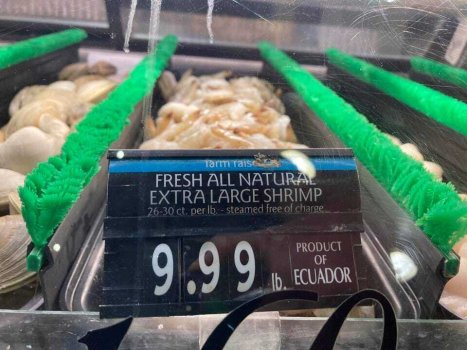Shrimp is the most widely eaten seafood in the United States. The global aquaculture market was valued at $204 billion in 2020 and is expected to reach $262 billion by the end of 2026. Shrimp sales volume increased from 275 to 415 million pounds in the past five years, but traditional shrimp farming has an environmental cost.
Daniel Russek, CEO and founder of Atarraya wild shrimping, destroys two million kilometers of seabed each year. “Traditional shrimp farms rely on continuous water waste and mangrove deforestation. Creating a sustainable shrimp supply requires little or no dependencies on the ocean or natural habitats and no antibiotics or chemicals.”
But today, Russek says the industry has microbial systems that enable closed-looped production using only organic components. “It is doable, but its management is very complex, and artificial intelligence (AI) is very good at doing this at scale,” said Russek.
Shrimpbox is shrimp farming technology using AI. Russek says to think of Shrimpbox as the aquaculture equivalent to agriculture’s vertical farming. “Urban aquaculture shrimp vertical farming technology offers fresh, locally produced protein for immediate consumption.”
The vertical shrimp farms are housed in traditional cargo containers located anywhere, even in landlocked, urban areas. A Shrimpbox farm can be moved or scaled up according to production needs.
Continue reading: https://www.forbes.com/sites/jenniferhicks/2022/10/28/heres-how-this-company-uses-ai-to-grow-shrimp-sustainably/?sh=1a38a28c78fc
Daniel Russek, CEO and founder of Atarraya wild shrimping, destroys two million kilometers of seabed each year. “Traditional shrimp farms rely on continuous water waste and mangrove deforestation. Creating a sustainable shrimp supply requires little or no dependencies on the ocean or natural habitats and no antibiotics or chemicals.”
But today, Russek says the industry has microbial systems that enable closed-looped production using only organic components. “It is doable, but its management is very complex, and artificial intelligence (AI) is very good at doing this at scale,” said Russek.
Shrimpbox is shrimp farming technology using AI. Russek says to think of Shrimpbox as the aquaculture equivalent to agriculture’s vertical farming. “Urban aquaculture shrimp vertical farming technology offers fresh, locally produced protein for immediate consumption.”
The vertical shrimp farms are housed in traditional cargo containers located anywhere, even in landlocked, urban areas. A Shrimpbox farm can be moved or scaled up according to production needs.
Continue reading: https://www.forbes.com/sites/jenniferhicks/2022/10/28/heres-how-this-company-uses-ai-to-grow-shrimp-sustainably/?sh=1a38a28c78fc

